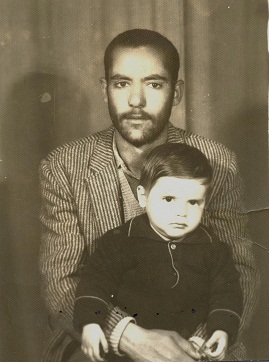


















WHO SHOULD BE TREATED AND HOW
Treatment should be considered in patients with HBeAg positive or HBeAg negative HBV DNA positive chronic hepatitis.
HBeAg-positive patients — Treatment should be delayed for three to six months in newly diagnosed HBeAg positive patients with compensated liver disease to determine whether spontaneous HBeAg seroconversion will occur. Patients with chronic hepatitis whose serum ALT is persistently below two times the upper limit of normal can be observed, considering treatment if and when the serum ALT becomes higher. Possible exceptions to this rule are those who have recurrent hepatitis flares that fail to clear HBeAg, patients with icteric flares, those with advanced histologic findings (such as bridging fibrosis/cirrhosis), and patients above the age of 40 with persistently high HBV DNA levels. Treatment may also be indicated in patients with HBV-related polyarteritis nodosa. Although treatment can lead to virus suppression in HBeAg positive patients with normal ALT, the likelihood of HBeAg seroconversion is low. The benefits of long-term treatment in such patients, most of whom being young Asians with perinatally acquired HBV infection, must be balanced against the risks of drug-resistance, side effects, and costs.
HBeAg-negative patients — Treatment may be initiated immediately once a diagnosis of HBeAg negative chronic hepatitis is established because sustained remission is rare in the absence of treatment. Because of the fluctuating course of HBeAg negative chronic hepatitis, serial follow-up is needed to differentiate an inactive carrier state from HBeAg negative chronic hepatitis. Liver biopsy should be considered in HBeAg negative patients who have serum HBV DNA levels of 10(4) to 10(5) copies/mL and normal or mildly elevated ALT to determine if treatment is warranted.
Choosing among the available options — Treatment strategies for chronic HBV include interferon, lamivudine, adefovir dipivoxil, telbivudine, and entecavir. Many new treatments are undergoing testing. Thus, an approach to the care of patients with HBV is evolving rapidly. The following are general rules that can be considered when deciding upon an approach in individual settings. The advantage of interferon compared to the other options are its finite duration of treatment, the absence of selection of resistant mutants, and a more durable response. On the other hand, side effects from interferon are troubling for many patients, and (less commonly) can be severe. Furthermore, interferon cannot be used in patients with decompensated disease. The main role of interferon is primarily treatment of young patients with well compensated liver disease, who do not wish to be on long-term treatment, and in whom drug resistance may limit their treatment options in the future. The main advantages of lamivudine are its lower cost and the many years of experience confirming its safety, including its use during pregnancy. Compared to adefovir, lamivudine has more rapid and more potent virus suppression, but entecavir is superior to lamivudine in suppressing viral replication. The main disadvantage of lamivudine is the high rate of drug resistance. The role of lamivudine in the care of HBV is likely to diminish with the availability of entecavir and adefovir, which are associated with lower rates of drug resistance. Lamivudine may still have a role in patients coinfected with HIV (in whom lamivudine may be part of the antiretroviral regimen), and in those who require short-term treatment such as HBsAg positive patients receiving prophylaxis during cancer chemotherapy. The main advantage of adefovir is its activity against lamivudine-resistant HBV and a lower rate of drug resistance compared to lamivudine. However, virus suppression is slow at the approved dose and up to 25 percent of patients experience minimal or no viral suppression. The average wholesale price of adefovir is approximately $15 to $19 per day, less than entecavir ($20 to $25 per day), more than telbivudine (around $16 per day), and considerably more than lamivudine ($7 per day). Adefovir at high doses has been associated with nephrotoxicity. At the approved dose of 10 mg daily, reversible increase in serum creatinine has been reported in 3 to 9 percent of patients after four to five years of treatment. Adefovir resistance was not detected after one year of treatment but the rate of drug resistance has been reported to be as high as 29 percent after five years of treatment. The most important role of adefovir is in the treatment of patients with lamivudine-resistant HBV, preferably in combination. In vitro data suggest that adefovir is also effective in suppressing telbivudine- and entecavir- resistant HBV but clinical data are not available. . The main advantages of entecavir are its potent antiviral activity and a low rate of drug resistance. Entecavir has a more important role in primary treatment of HBV than in patients with lamivudine-resistant HBV. Entecavir may also have an important role in patients with decompensated cirrhosis because of its potent antiviral activity and low rate of drug resistance but its safety in this patient population has not been well studied. Entecavir is a new drug and its safety as well as rate of drug resistance with long-term use is unknown. Studies in rodents (that used 24 to 40 fold higher doses of entecavir than in humans) have reported increased rates of tumors; the relevance of these findings to humans is unclear. As noted above, entecavir is much more costly than lamivudine and somewhat more costly than adefovir. Telbivudine appears to have slightly more potent antiviral effects compared with lamivudine and adefovir but it selects for the same resistant mutants as lamivudine and is more expensive. Thus, its role as primary therapy is limited. For HBeAg positive patients, the likelihood of response to lamivudine, adefovir, telbivudine, entecavir, and interferon depends highly upon the degree of elevation of the serum aminotransferases. As a general rule, treatment with any of these drugs does not result in higher rates of HBeAg seroconversion compared to no treatment in those who have a serum ALT 2 X the upper limit of normal. For HBeAg negative patients, prediction of response is less precise. Because of the need for long-term treatment, therapy is recommended only for those with persistent or intermittent elevation in ALT and/or substantial histologic abnormalities (moderate/severe inflammation or bridging fibrosis/cirrhosis). Interferon, adefovir or entecavir are generally preferred because long-term treatment with lamivudine is associated with diminishing response due to selection of drug-resistant mutants. An advantage of entecavir is a greater degree of reduction in HBV DNA compared with adefovir, although there have been no
direct comparisons
. Masoud sadreddini ,Gastroenterologist, associated professor of faculty of medicine , Urumieh medical University
WEST AZERBAIJAN URMIA--Dr.RAHMAT SOKHANI